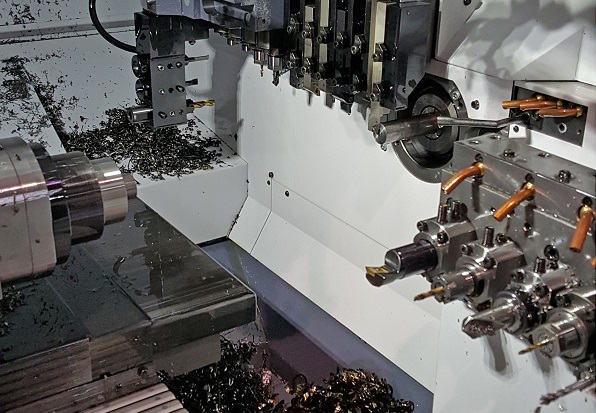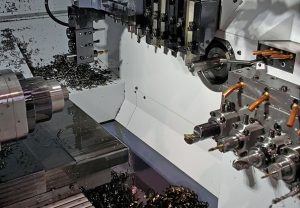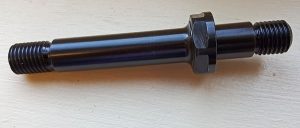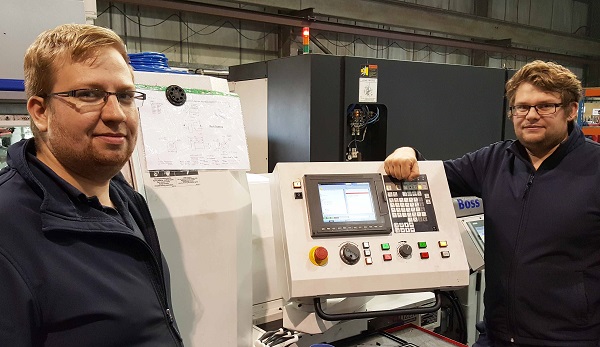Previously working as an engineer in the Formula One industry, it was the unsociable and unpredictable working routines that led Allan Carabine to set up his own machine shop in 2011. Working in motorsport taught the new business owner two valuable lessons: start with a five-axis machining centre and then implement leading CAM software to drive the machine.
For Milton Keynes-based MK Precision Engineering, this marked the arrival of a Hurco five-axis VM10U and HyperMill CAM software from Open Mind Technologies as the company’s very first acquisitions. Commenting upon this selection, which was to base the foundation of the company, Carabine says: “Everyone can do three-axis work, so when I started I wanted to start with a five-axis machine. The next thing I had to get was HyperMill CAM software.
“I’ve worked for Formula One teams as well as some of the most prestigious subcontractors in the motorsport supply chain; all used HyperMill as it is the only viable package for companies serious about five-axis machining,” he continues. “Open Mind confirmed the post-processors were compatible with the VM10U and from that point, the CNC controller became irrelevant as everything is modelled and programmed in HyperMill.”
The Buckinghamshire business started by machining steel mount components for a camera company; this soon evolved into five-axis Formula One work and six years later the small business has expanded to machining a complete range of rail, cryogenics and motorsport parts.
Although the business manufactures production runs for the defence industry, the average batch size ranges from 10 to 20 parts, machining materials from aluminium, stainless steel, plastic and nylon composites. Of course, to take on the additional work, MK Precision required more staff and machine tools. The acquisition trail brought the subsequent arrival of two three-axis Hurco VM30 machines, a larger five-axis VMX30U, a TM8i turning centre and a CMM for ensuring the conformity of Formula One components. However, 40% of the company’s work remains prototype business and this is where HyperMill really benefits the company.
“The programming time will be anything from 20 to 50% of the overall time spent on each part, something that obviously varies with the complexity of individual jobs,” says Carabine. “With prototype parts requiring up to four hours of machining, the programming time can be anything from 30 minutes to 3 hours. One of the main benefits of HyperMill is the modelling and collision checking of the parts. Additionally, the post-processors run error-free to give us the utmost confidence that we can load a part on to a machine and whatever program we load, we can run it without waiting nervously. This confidence is set in stone with a rework cycle that creates the toolpaths with comprehensive collision detection. Here, the cycle revisits all toolpaths prior to sending the program to the machine tool.”
The growing workload recently noted an additional seat of HyperMill arriving at MK Precision. According to the company, the first seat has delivered remarkably short programming times; a necessity for a machine shop manufacturing low quantity, highly complex parts. The second seat is now underpinning this strategy.
From a cost perspective, HyperMill has reduced tooling consumption by almost 80% and slashed cycle times by over 50%. These savings are credit to continually evolving strategies that are being developed by Open Mind. Some of the new strategies that are now being applied were unfamiliar to the company when it bought its first seat some six years ago. For instance, the statistics are partially credit to innovative trochoidal milling strategies, something that is also generating a noticeable reduction on spindle load at MK Precision.
Another strategy that is prolonging tool life and improving consistency and process reliability for unmanned machining is the five-axis optimised rest material machining strategy. The new cycle generates high-speed cutting toolpaths for rest material machining based on the preceding roughing operation. Shorter tools can be used with improved stability for machining excess material from cavities and hard to reach areas.
“This feature has given us more confidence when machining parts with cavities,” says Carabine. “Previously, we would order extra tools in preparation for tool breakages in cavities, but the five-axis optimised rest material strategy has given us confidence in the process, the cutting tool and the ability to run unmanned machining where necessary.”
With customers that frequently require engraved components for traceability, MK Precision is making use of the five-axis contour milling strategy.
“There are certainly projects that we would never have won without the five-axis contour milling strategy,” says Carabine. “It enables us to engrave parts on irregular and round parts. Easy to program, the strategy keeps the cutting tools perpendicular to the component face to generate simple and precise part marking. This has been a huge benefit when we have needed to engrave batches of parts with individual part numbers. Even when doing this, HyperMill has a sequential feature that automatically changes the part number on each component.”
MK Precision has a number of turned parts which often require second operation machining on one of the company’s five-axis Hurco machines.
“HyperMill accommodates all our turning requirements and the multi-axis shape-offset module has the ability to trim toolpaths automatically to in-process stock, thereby saving manual tool edit procedures,” explains Carabine. “This utility covers stock model generation where we can easily transfer the stock model to our three- or five-axis machines. As a result, we can streamline the transfer of parts from one machine to another while saving considerable programming times. It also reduces the machining times as it intuitively recognises what stock has already been removed.”
In addition to the HyperMill CAM package, MK Precision is making good use of HyperCAD-S.
Concludes Carabine: “Although HyperMill enables us to model and program parts extremely quickly, some customers, particularly in the rail industry, only supply physical 2D drawings and not common electronic formats such as STEP, IGES, DXF and STL files. Using HyperCAD-S, we can quickly generate component models from 2D drawings and these are rapidly expedited to create CAM programs. Additionally, we can accept electronic files from customers, drop them into HyperCAD-S, manipulate and edit the files where necessary and then generate part programs.
“Overall, Open Mind has delivered huge savings in programming times, shop-floor production, tool life and lead-times.”
For further information www.openmind-tech.com






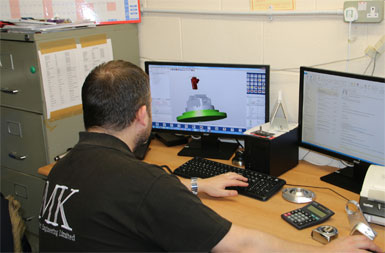
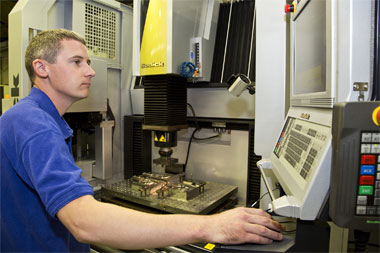
 “We were witnessing an increase in demand for spark erosion work involving thin, deep ribs,” explains technical director Mark Terry. “For instance, we were recently awarded a repeat contract for a number of multi-impression two-shot wheel moulds. Traditionally, each impression required 45 hours of spark erosion and three electrodes. The target cost and lead-time for the package would not have allowed us to complete the project on-time and on-budget, so we began investigating new EDM technologies.”
“We were witnessing an increase in demand for spark erosion work involving thin, deep ribs,” explains technical director Mark Terry. “For instance, we were recently awarded a repeat contract for a number of multi-impression two-shot wheel moulds. Traditionally, each impression required 45 hours of spark erosion and three electrodes. The target cost and lead-time for the package would not have allowed us to complete the project on-time and on-budget, so we began investigating new EDM technologies.” 